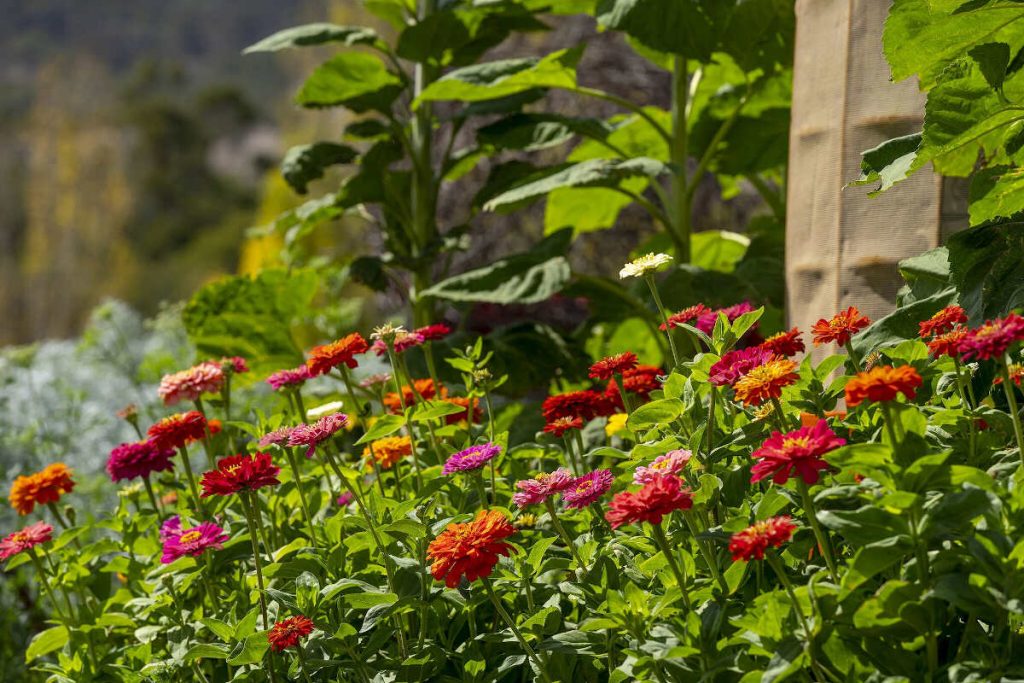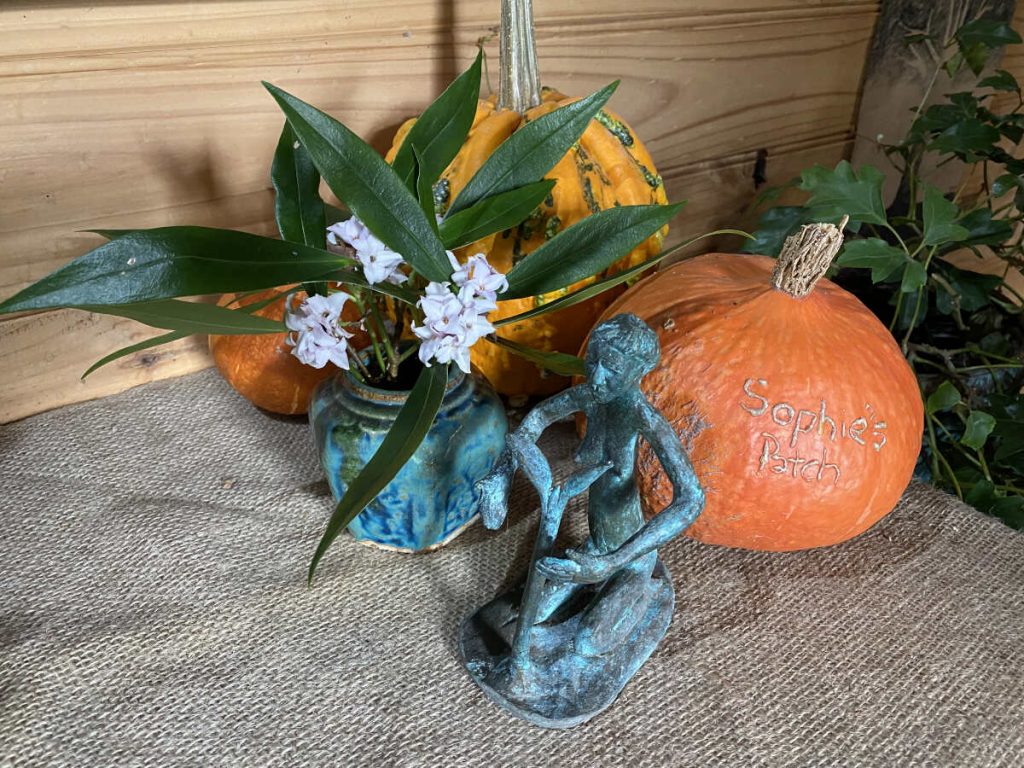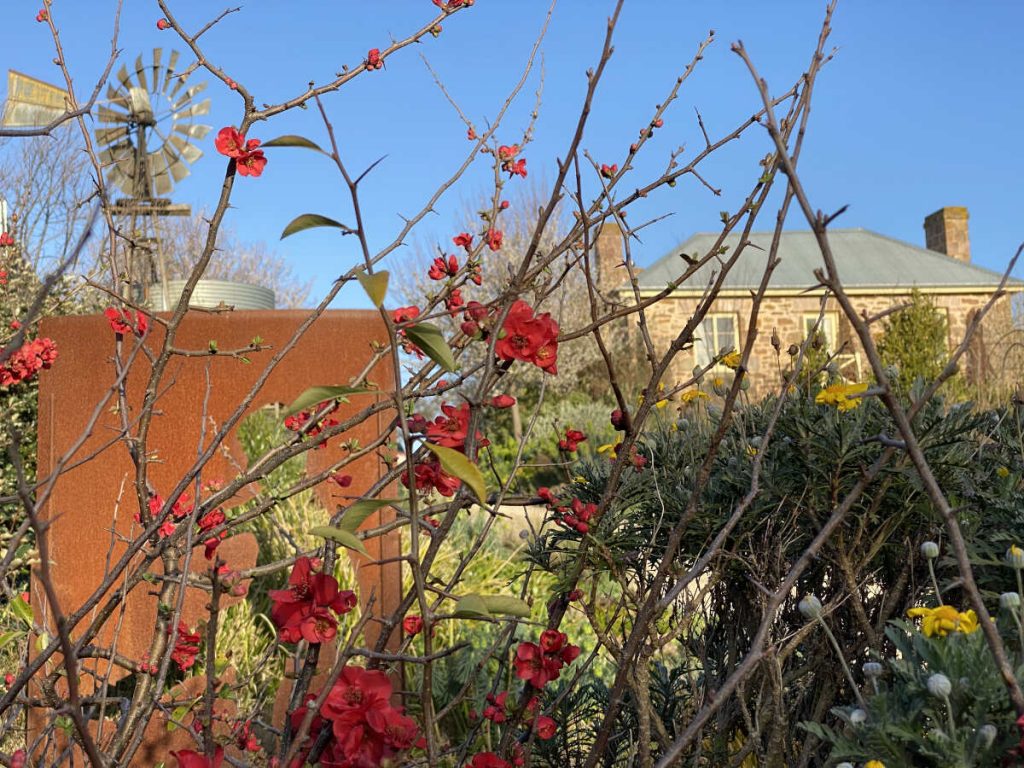I love to have flowers in my garden all year round. I also love to be able to pick flowers from my garden and enjoy them in my home all year round. While there are many plants that look great in your garden with growth and flowers that allow you to pick their blooms while still leaving some outside to keep the garden looking good, others are grown primarily for picking.
Here are my favourite ‘good value’ picking flowers for inside.
Roses
Adored for their beauty in the garden, with most repeat flowering varieties blooming for between 6 and 9 months of the year. All roses are delightful however hybrid teas are renowned for their ability to make great tall cut flowers, with strong straight stems topped by a large, classic rose-shaped flower. As an added bonus, many also have a delicious scent. Many floribunda roses also pick well, and miniatures are also delightful for smaller vases such as table centres. Roses can easily be enjoyed inside in a vase for a week. It is important to put the cut rose stem into water as soon as possible and many experienced roses growers have a bucket of water in the garden with them when they are picking. Always recut the stems under water and the experts even stand the stems up to their necks in water for two or three hours before arranging. Roses need at least five to six hours sun a day and regular feeding and watering to bloom continually, even though they are remarkably drought tolerant once established, however without watering, they flower less over summer and their blooms don’t last as well.
Alstroemeria – Peruvian Lilies
These are very popular as long-lasting cut flowers which will survive for over three weeks when picked, although they can drop a bit after a week. They have a long flowering period when grown as a garden plant, coming in a range of colours from red, yellow and orange, through to shades of pink and purple and even soft-shell pink to white. While they flower spectacularly in spring and autumn, they often produce bloom intermittently throughout the year. The taller varieties grow between ½ and 1 metre high however they tend to flop and sprawl over a large area, often 1.5 metres across. This does not bother the gardeners who treasure their blooms as cut flowers, but for those who may have limited space to garden or who just want a compact plant, the solution lies in trying the new dwarf varieties, such as ‘Princess Lilies’ which only grow 30-40cm high by 50cm wide.

The trick with both types is to always pluck the flower stalk, not pick them. This stimulates the plant to flower more. They are very adaptable to almost any position in the garden, but ideally with good soil, in sun or partial shade, and regular watering and feeding. Although once established, they are drought without water their blooming will be reduced. Their fleshy roots resent disturbance so once planted, either in a pot or in the ground, it is wise to leave young plants to settle for several years before dividing. Once established, they can be divided in autumn, however, always leave them in large chunks, rather than smaller pieces as these are likely to transplant better.
You can read more about why I love them in this post I wrote last year. https://sophiespatch.com.au/2022/01/01/alstroemeria-peruvian-lilies/
Bulbs
There are so many different bulbs so I will broadly group them into spring flowering bulbs which you plant in autumn and summer flowering bulbs which you plant in winter. When they are planted in the right spot and happy, they multiply to form healthy clumps. These florist favourites come in a range of colours and forms.

Spring flowering bulbs
There are many ‘plant and forget’ spring flowering bulbs which make great cut flowers such as daffodils, jonquils, hyacinths, tulips, chincherinchees, and Dutch iris. While the flowering period of each variety may be as little as one month, with careful planning it is possible to choose varieties that give you blooms from June till October.
Summer and autumn flowering bulbs
These include liliums, calla lilies, gladioli, pineapple lilies (Eucomis) and nerines. Dahlias are a tuberous bulb that produce very showy blooms in a range of colours and forms. While they are stunning in a vase, in the garden they require thorough staking, and this can look a little daggy in the garden. For more information visit dahliasaustralia.org.au
Sweet peas
These deliciously scented flowers come in an amazing range of colours from pink and mauves to burgundy red and purple. Some are simple straight colours, while others are bicolour, or show shading or coloured veins. Annuals which are traditionally sown from seed around St Patrick’s day or just after, sweet peas produce a mass of flowers for a several months in spring.

While they need to be replanted each year, when they do flower, they take your breath away with their beauty in the garden, as well as producing abundant bunches of flowers for inside, so you can have your cake and eat it too. Different varieties can be grown as dwarf bedding plants or climbers on mesh panels or upright climbing frames. When you pick these blooms simply stand them in deep water for two to three hours before arranging.
Perennials
There are other perennial plants I suggest growing if you love to pick flowers and have the space in your garden, even if they have a relatively short flowering period. These include perennial asters, shasta daisies, delphiniums, lupins, chrysanthemums, hummingbird mints (Agastache) and perennial gypsophila if you can find it.
Annuals
Annuals to grow for bling in the garden and in a vase are zinnias, stocks, Canterbury bells, Molucca balm, sunflowers, Iceland poppies, larkspur and Love-in-the-mist.

There are of course many other blooms which are all delightful to grow and pick, such as peonies and tuberoses, however these require more skill and possibly the right position and climate, so start with what’s easy and floriferous, and then expand your skills.
Flowering Shrubs
There are also a number of shrubs you can grow in your garden which provide interesting foliage for vases and backing for other flowers. Abelia is a favorite with its glossy green to bronze foliage, often arching growth, and as an added, bonus pretty little flowers from late spring to early autumn. Two Australia native plants which are great for the same reason are Geraldton waxes and Thrypotomenes and both need similar conditions with very well-drained soils. South African Leucadendrons and Proteas are also renown as long last cut flowers, however as the bushes can get unsightly when not pruned regularly, pick their flowers all the time and you will get bunches of flowers for yourself and friends and retain a compact bush.

If you have space, I love flowering quince or japonicas (Chaeneomeles) for their winter spring blooms. These deciduous shrubs adorn their bare stems with small single to double flowers in a range of colours, from red and orange, through salmons and pinks to pure white. Several sprigs in a vase at this time and you have got an instant architectural flower arrangement.

Rules for Picking Flowers
There are some general rules for picking flowers. Most flowers last better when picked in the early morning or in the evening, as long as the plant is not stressed for water or from the heat of the day. Once picked plunge them into water as soon as is possible. Many benefit from being stood in a bucket of deep water up to the neck of the flower for at least a few hours before arranging. Before arranging flowers strip off any foliage that will be under the water level as if left, it can turn the water stale. When recutting flowers for a vase, use sharp secateurs or a knife and cut stems at an angle as this helps the flowers absorb water better. Change the water in the vase regularly and recut the flower stem every few days. The use of a floral preservative in the water will help the flowers even last longer.







